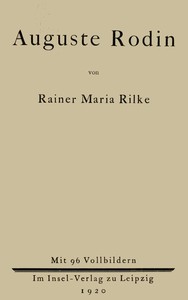| Summary |
"Auguste Rodin" by Rainer Maria Rilke is a contemplative exploration of the life and work of the renowned sculptor, penned during the early 20th century. This work delves deep into the artistic philosophy and emotional landscape of Rodin, capturing his creative journey, struggles with fame, and the profound impact of his sculptures. Rilke's narrative portrays Rodin not just as an artist, but as an emblematic figure of human existence, grappling with themes of isolation, legacy, and the quest for authenticity in art. The opening of the book sets the tone for Rilke's reflective examination of Rodin’s artistic process and existential contemplations. It begins by examining the complications of fame and the loneliness it can bring, juxtaposed against the vast body of Rodin's work, which transcends his name. Rilke hints at the depth of Rodin’s life experiences, suggesting that his humble beginnings and struggles have shaped the powerful expressions found in his sculptures. The text beautifully describes Rodin’s connection to nature, his patience in creation, and his pursuit of a deeper truth in art, establishing a backdrop for the subsequent exploration of his significance as a sculptor. The author emphasizes the need for an understanding of the artist's inner life as essential to fully appreciating his works. (This is an automatically generated summary.)
|

